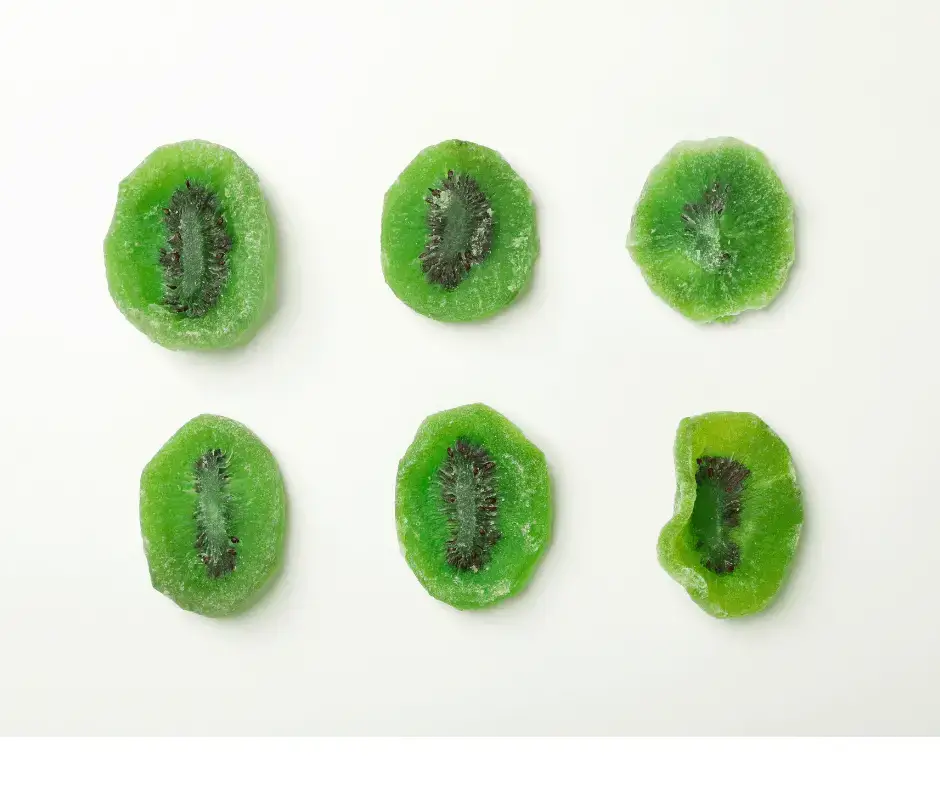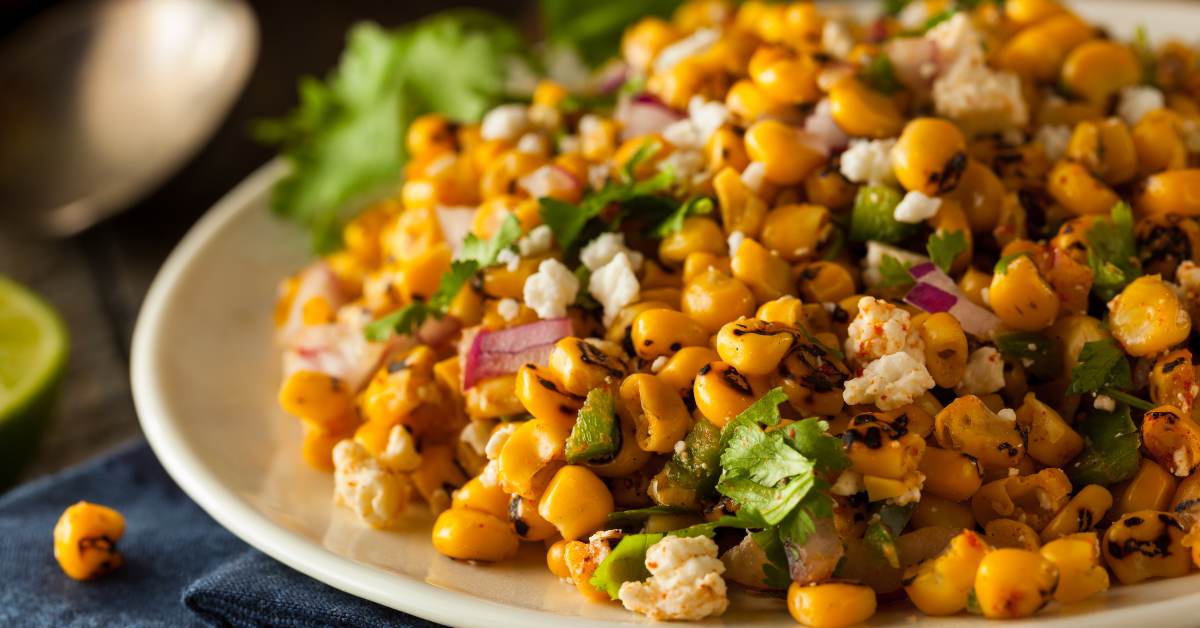If you’re thinking about dehydrating kiwi, but haven’t yet, allow me to give you a few good reasons to do it now:
For starters, the sweet yet tarty taste of dried kiwi is nothing short of scrumptious.
Additionally, kiwifruit is rich in essential nutrients, including Vitamin C, potassium, and fiber, so they’re definitely healthy.
Kiwi is also fairly low on the glycemic index, so you don’t have to worry about it boosting your blood sugar level.
All of that aside, drying kiwifruit is a great way to prevent it from going bad.
So, if you have a stockpile of kiwis that you know aren’t going to be eaten anytime soon, give this food preservation method a try.
In this post, I’m going to shed light on the many different ways you can dry kiwi as well as show you how to store it so all your hard work doesn’t go to waste 🙂
Important Prepping Tip Before Dehydrating
A crucial key to success is starting with the right kind of fruit. I’m not talking variety here but ripeness.
You want to dry kiwi as soon as it’s ripe – don’t attempt to process unripe kiwi or you’ll be in for a rude awakening with taste.
To check for ripeness, hold the kiwi and squeeze it gently. It should be soft but not squishy, and not definitely not hard.
If it is hard and therefore not ripe enough yet, you can speed up the ripening process by placing your kiwi in a brown paper lunch sack for a few days. Check for ripeness – using the squeeze trick – daily.
How to Dry Kiwi in a Dehydrator
The first and probably the easiest way to dehydrate kiwifruit is using a dehydrator. All you’ll need is a dehydrator tray, vegetable peeler or paring knife, and of course, a dehydrator.
Prices pulled from the Amazon Product Advertising API on:
Product prices and availability are accurate as of the date/time indicated and are subject to change. Any price and availability information displayed on [relevant Amazon Site(s), as applicable] at the time of purchase will apply to the purchase of this product.
- Grab your vegetable peeler or paring knife and start peeling the kiwifruit.
- Start slicing the kiwi into thin slices. The thinner the slice, the faster it’ll dry up.
- Put the kiwi slices on the dehydrator tray with ample space between each side.
- Put the dehydrator in place, cover it up, and then set it up to 135 °F.
- After six hours, the kiwi should be dry. The thicker the slice, the longer it’ll take.
- Lastly, store your dry kiwis in plastic bags or a completely sealed container.
How to Dry Kiwi in the Oven
Don’t have a dehydrator tray and you’re looking for an alternative? No worries, you can still dry up kiwifruit using only the oven. Below are the steps of how to dehydrate kiwi in the oven.
- Grab your vegetable peeler or paring knife and start peeling the kiwifruit.
- Slice the kiwi into equally thin slices so that they dry up within the same timeframe.
- Grab a cooking sheet, put the slices on it, and set the oven to the lowest temperature.
- Check on the kiwis after four hours. If they’re not yet dry, give them some more time.
- Do not leave the kiwis in the oven too long or else they’ll burn and be inedible.
- Lastly, store your dry kiwis in plastic bags or a completely sealed container.
How Do You Make Sun-Dried Kiwi?
Prefer the old-school sun-drying approach? We’ve got you covered. Keep in mind, however, that it’ll take a lot longer for your fruit to dehydrate in the sun as opposed to a dehydrator or oven.
Supplies
You’ll need a few things to ensure optimal results from this approach. First, you’ll need some drying racks. You can use cooling racks, but be sure to set them on cookie sheets.
You can also use plastic drying racks. Alternatively, you can make your own. Just be sure to use something that’s well-ventilated.
Second, you want some cheesecloth to cover the fruit in order to keep bugs off of it. You’ll also need a lemon-water mixture.
Grab a bowl, mix four cups of water with one cup of lemon juice, and use the mixture to pretreat the kiwis so they don’t brown.
Last, you’ll need a spot outdoors that’s both dry and warm where you can dry your fruit. Ideally, the temperature should be over 85 °F, and the humidity should be under 60%.
Preparation
Got all the supplies you need? Sweet! Now it’s time to prepare the kiwifruit for sun-drying. First, you want to wash the kiwifruit real good, peel them, and then cut them into thin slices.
As mentioned earlier, the thinner the slice, the faster it’ll dry. Be sure to slice the kiwi into equally thin slices so they all dry up within the same timeframe.
Next, you want to soak the slices into the lemon-water mixture for a few minutes. Thereafter, put the slices on the drying racks while maintaining enough space between each slice to allow air to flow between them.
Make sure to put something underneath the racks like a piece of foil to prevent dripping. Lastly, cover the racks with cheesecloth.
Sun-Drying
All you have to do now is set up your drying racks somewhere warm and dry in the sun. For the fruit to be completely sun-dried, you’ll have to turn it every once in a while.
Ideally, it should take the fruit around two to three days to dehydrate. Please be sure to bring the drying racks inside at night, though.
How to Store Homemade Dried Kiwi
If you have a stockpile of dehydrated kiwifruit that you aren’t going to eat anytime soon, you’re going to need to store them properly so that they remain fresh for a while.
Before trying to store dry kiwi, make sure they’ve completely cooled down, assuming you dried them in the oven or dehydrator.
After they’ve cooled down, put the dry slices of kiwi in an air-tight container. A glass container would be ideal. If you don’t have a glass container, you can use a plastic container or a plastic bag. Just be sure the container doesn’t allow any airflow.
Lastly, place the container or plastic bags in a dark place that’s cool and dry. This could be your pantry, cabinet, or other. If you live in an area that’s humid, put the dry kiwi in the fridge/freezer.
If you happen to have a vacuum sealer, that’s the best way to store dehydrated foods. You can also use a vacuum sealer jar attachment to suck the air out of a mason jar. Doing so can increase shelf-life by 5-10 years!
Creative Ways to Enjoy Dried Kiwi Slices or Chunks
Dried kiwi is best paired with low-sugar fruits such as raspberries and grapefruit, instead of eating a full serving of dried kiwi, pair half a serving with a low-sugar fruit of your liking.
You can also use dried kiwis to add a layer of crunch to a green salad.
Generally speaking, dried kiwis don’t need to be paired with anything. Treat them as healthy grab-and-go snacks.
Tips for Making the Perfect Dehydrated Kiwi Chips
If you slice the kiwi really thin, you can make excellent chips out of them. Way better than the fried potato stuff!
You really don’t have to do anything special to them, but if they’re going to be laying around for a while, there’s a secret to keeping kiwi chips vibrant green and crispy:
Before dehydrating, dip them in a solution of 1 cup water and a splash of ascorbic acid (usually 1-2 tablespoons depending on how big a batch you’re making).
And just like that, they’ll stay just as green and fresh-looking as the day you cut into them!
Frequently Asked Questions
Is dried kiwi good for you?
Yes! Did you know kiwi has more vitamin C than oranges? And it’s even more concentrated in its dehydrated form because all the water has been sucked out. Plus, as a general rule, dried fruit has more than 3 times the fiber and minerals by weight than their fresh counterparts.
Just keep in mind that dried kiwi is super condensed, and the natural sugars within them are, too. So if you’re watching your sugar intake, you may want to ration them.
How long does dried kiwi last?
Dried kiwi has a shelf life of 1 to 2 years. You can get even longer if you vacuum pack it and add a desiccant pack to protect against moisture.
What should the texture of dried kiwi chips be like?
Oddly enough, dried kiwi feels a bit leathery. If you want crispy instead of slightly chewy, you should dehydrate them for several hours past the recommended time, possibly even overnight.
Do I need a dehydrator?
No, as I discussed earlier, you can dry kiwi in an oven or even outside in the sun if you live in a dry enough environment. I’ve even heard of people using the dashboard of a hot, dry car as a dehydrator alternative!
Final Thoughts
If you have the time and inclination, drying kiwis in the sun would be ideal. Still, drying them in an oven or dehydrator gives you great results, though not everyone has the option of a dehydrator. So, pick your favorite method and get to enjoying a quick and healthy snack!










